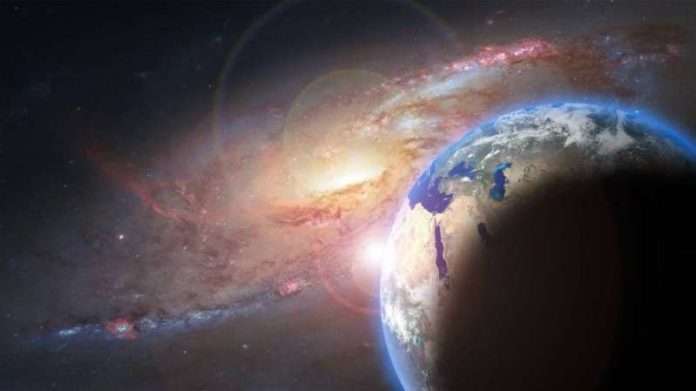Above and below the plane of the Milky Way, a pair of massive, symmetrical bubbles of gas stretch out like a spray of a cosmic hourglass, dimly glowing with X-ray flashes.
These entities are known as the eROSITA bubbles, after the X-ray telescope that spotted them in 2020. They are located in the Milky Way’s massive gaseous envelope, or ‘circumference’, and extend about 45,661 light-years on either side of the galaxy’s center, reports Al-Rai daily.
The bubble-forming energetic gases were assumed to have a relatively equal, albeit somewhat high, temperature due to the shock of their passage through the medium, although the surprising discovery now makes it seem more complicated than it appears at first glance.
Data from the Suzaku satellite, operated by NASA and the Japan Aerospace Exploration Agency (JAXA), indicate that the X-ray glow of the bubbles is not because they are hotter than their surroundings as is assumed, but rather because the gases simply have a higher density. Science Daily reported on Sunday.
“Our goal was really to learn more about the galactic medium, which is a very important place in understanding how our galaxy formed and evolved,” said astronomer Anjali Gupta, co-author of the study from Columbus State Community College in Ohio.
A lot of the regions we were studying happen to be in the bubble area, so we wanted to see how different the bubbles were when compared to the regions further from the bubble.
Based on an archive analysis of 230 X-ray observations of the bubbles and surroundings, the researchers found that the previously used method could not adequately describe the diffusion of the temperature data.
Previously, a temperature difference between the eROSITA bubbles and the surrounding galactic halo was assumed to be due to the relative brightness of the bubble shells.
According to the newer analysis method, this brightness is reduced to the higher density of gas inside the bubbles and not to the heat.
The research also sheds some light on how these bubbles form, as readings of the extrasolar ratios of neon, magnesium and oxygen in the bubble shells indicate that these bubbles were formed by the formation of nuclear stars, or by the injection of energy from other bodies (such as massive stars for example). ).

















